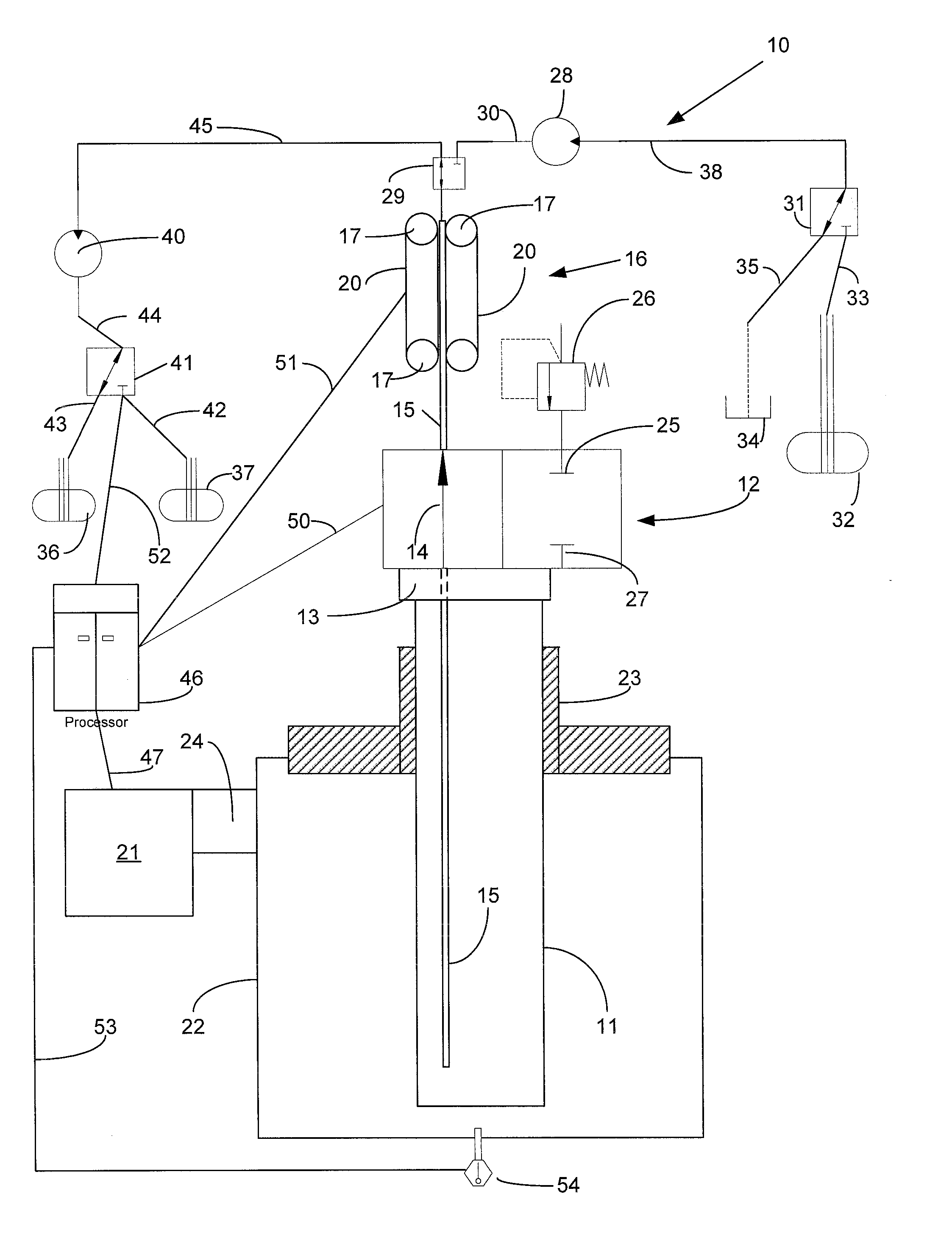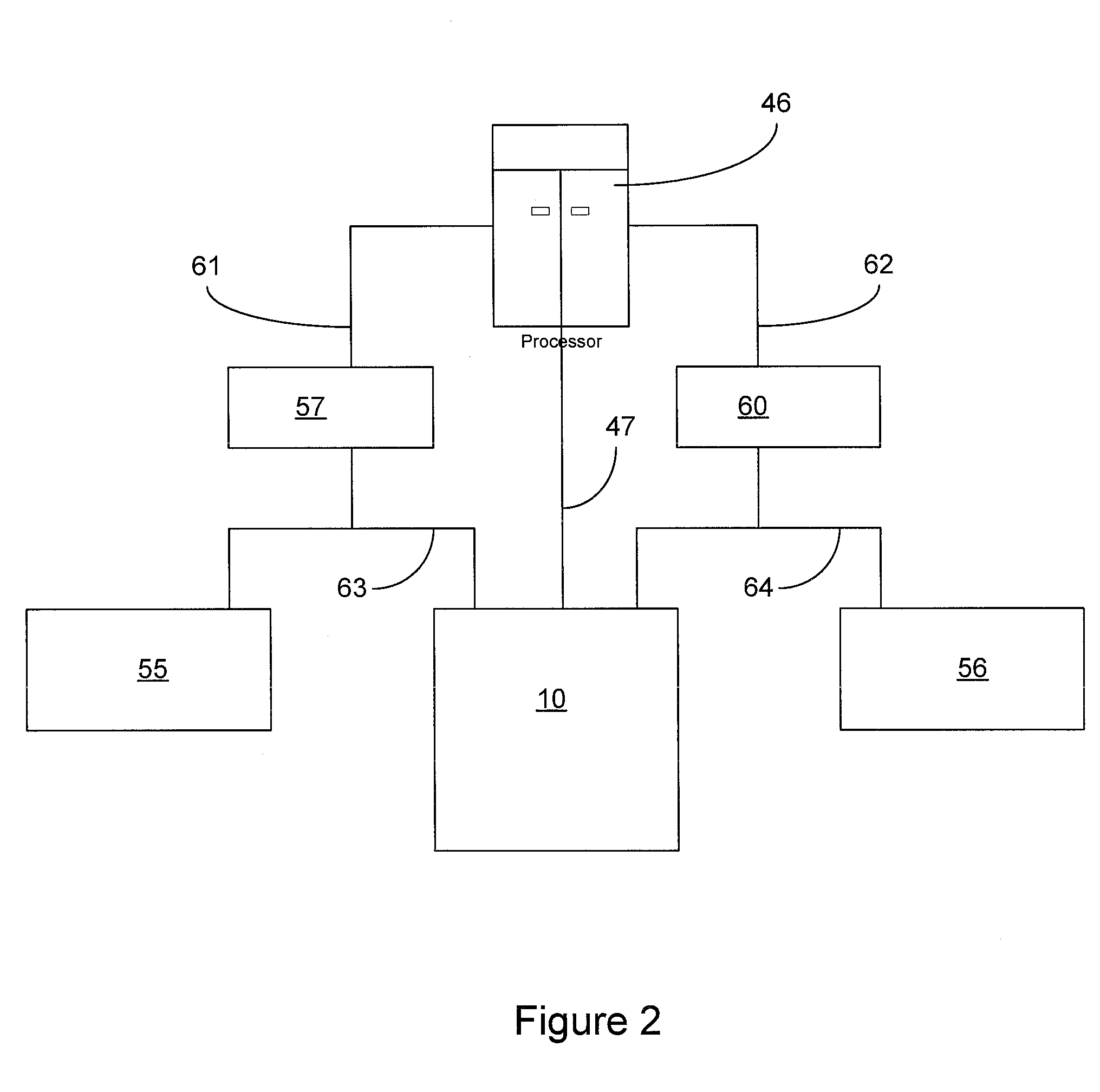Method and Apparatus for Microwave Assisted High Throughput High Pressure Chemical Synthesis
- Summary
- Abstract
- Description
- Claims
- Application Information
AI Technical Summary
Benefits of technology
Problems solved by technology
Method used
Image
Examples
Embodiment Construction
[0020] In a first embodiment, the invention is a vessel assembly for increasing the throughput rate at which a series of high-pressure sequential microwave assisted reactions can be carried out. This embodiment, along with some additional features, is illustrated in FIG. 1 as part of the microwave instrument broadly designated at 10. FIG. 1 is a schematic diagram that is not drawn to scale, and thus should be understood in its schematic and illustrative context. More exact descriptions and diagrams of certain of the features can be found in certain of the incorporated references, including for example commonly assigned U.S. Pat. No. 6,607,920, the contents of which are incorporated entirely herein by reference.
[0021] The vessel assembly includes a pressure resistant reaction vessel designated at 11. The vessel 11 is formed of a material that is substantially transparent to microwave radiation for holding compositions that can be exposed to microwave radiation while those compositio...
PUM
 Login to View More
Login to View More Abstract
Description
Claims
Application Information
 Login to View More
Login to View More - Generate Ideas
- Intellectual Property
- Life Sciences
- Materials
- Tech Scout
- Unparalleled Data Quality
- Higher Quality Content
- 60% Fewer Hallucinations
Browse by: Latest US Patents, China's latest patents, Technical Efficacy Thesaurus, Application Domain, Technology Topic, Popular Technical Reports.
© 2025 PatSnap. All rights reserved.Legal|Privacy policy|Modern Slavery Act Transparency Statement|Sitemap|About US| Contact US: help@patsnap.com



